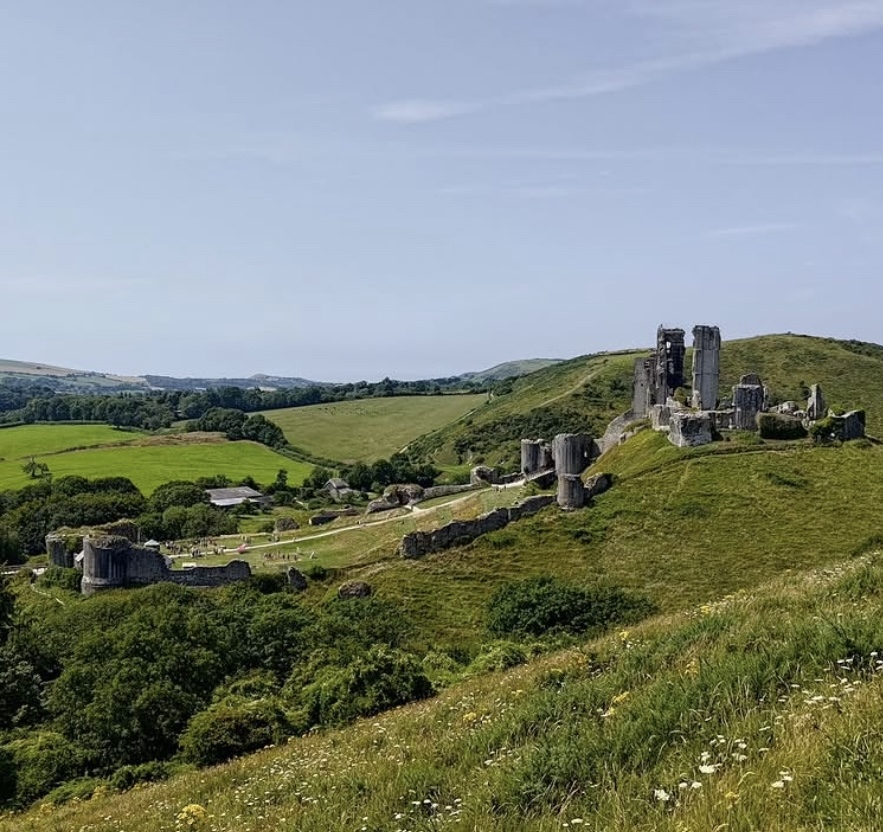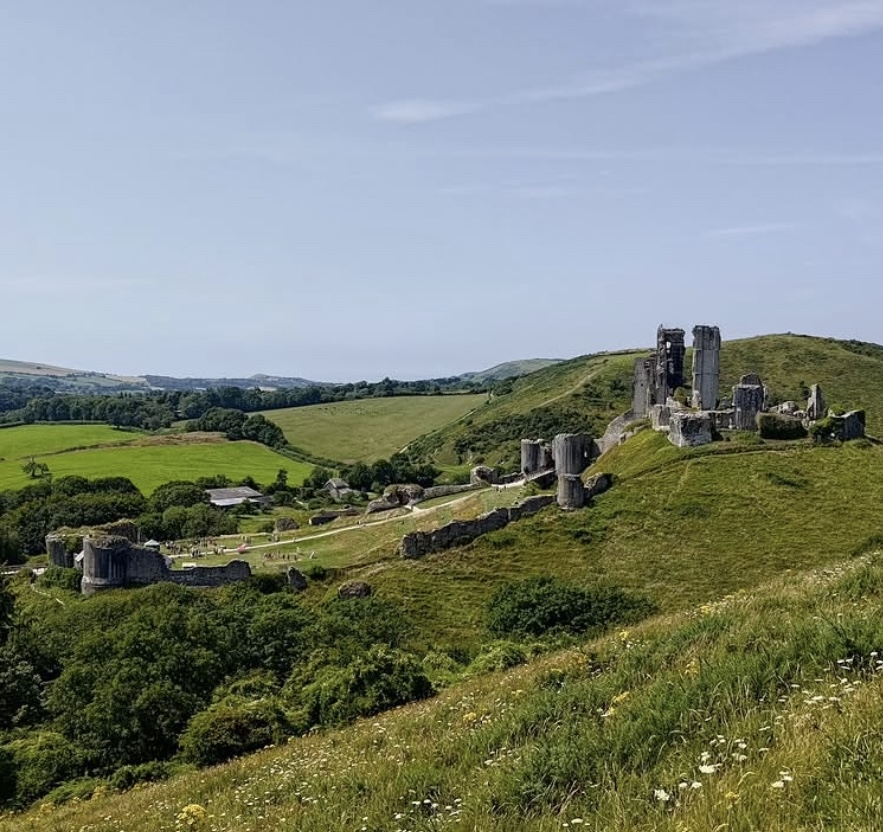Dorset’s hills offer a captivating mix of chalk downs, rugged ridges, and gentle slopes that define the county’s inland and coastal character.
Dorset’s hills vary from chalky and ancient, to wild yet walkable. They’re less about towering height than layered stories, from fossil beds to fortresses, all under an open sky. Pick a ridge and roam!
Dorset Downs
- Location and Scale: Spanning northern and central Dorset, these chalk hills stretch from Cranborne Chase near the Wiltshire border to the Marshwood Vale in the west. They’re part of southern England’s chalk belt, rising to Bulbarrow Hill (274 meters), the county’s second-highest point.
- Landscape: Rolling and expansive, the Downs feature smooth slopes, steep escarpments, and dry valleys carved by ancient streams. Chalk grasslands dominate, blooming with orchids, wild thyme, and butterflies like Adonis blues in summer.
- Highlights:
- Maiden Castle: Near Dorchester, this Iron Age hillfort (600 BCE) is Britain’s largest, its layered ramparts sprawling across a plateau.
- Hambledon Hill: A Neolithic stronghold (2800 BCE), its summit offers 360-degree views over Blackmore Vale.
- Cerne Giant: A 180-foot chalk figure near Cerne Abbas, possibly ancient, etched into a grassy slope.
- Experience: Hike the Wessex Ridgeway for multi-day treks or try shorter loops like the 8-mile Cerne Abbas circuit. The open terrain feels timeless, with barrows and skylarks overhead.
Purbeck Hills
- Location and Scale: A compact, dramatic chain in southeast Dorset, within the Isle of Purbeck (not an actual island). They run from Nine Barrow Down (199 meters) near Swanage to Ridgeway Hill above Lulworth, peaking at Swyre Head (203 meters), Dorset’s highest point.
- Landscape: Steeper and rockier than the Downs, these hills blend chalk with limestone, their ridges sharpened by erosion. They spill into heathlands and frame the Jurassic Coast, creating a wild, windswept vibe.
- Highlights:
- Corfe Castle: A Norman ruin crowns a gap in the range, its hilltop perch a medieval sentinel.
- Nine Barrow Down: A Bronze Age burial ridge with sweeping views to Poole Harbour.
- Golden Cap: Technically coastal but tied to Purbeck’s geology, this 191-meter cliff is the south coast’s highest point.
- Experience: The Purbeck Way (5 miles from Corfe to Swanage) or South West Coast Path sections (like the 7-mile Golden Cap climb) offer rugged hikes with sea and heath vistas.
Other Notable Hills
- Eggardon Hill: In West Dorset, this 252-meter chalk outcrop blends grassy slopes with an Iron Age fort. Its 4-mile circular walk reveals the Marshwood Vale and distant coast.
- Hod Hill: Near Blandford Forum, a 143-meter rise with an Iron Age fort overtaken by Romans in 43 CE. Its flat top and steep sides make it a striking vantage point.
- Lewesdon Hill: At 279 meters, Dorset’s highest point (just outside the AONB), this wooded beech-crowned hill in the west offers a quieter, forested contrast.
Geological Highlights
- Chalk Core: Most hills stem from Cretaceous chalk—fossilized sea creatures compressed over 65-100 million years—uplifted and eroded into today’s forms. Purbeck adds limestone and sandstone twists.
- Features: Dry valleys (e.g., Scratchy Bottom), chalk springs, and exposed fossils (echinoids, flints) hint at their submarine origins.
Ecology
- Flora: Thin, chalky soils nurture specialists—early spider orchids, marjoram, and yellow rattle. Heather and gorse cloak Purbeck’s edges.
- Fauna: Kestrels and buzzards hunt above, while rare sand lizards bask on Purbeck slopes. Roe deer flit through scrub.
Historical Footprints
- Prehistory: Neolithic barrows (Nine Barrow Down) and Iron Age forts (Maiden Castle, Hod Hill) mark early settlement.
- Trails: Ancient drove roads and the Wessex Ridgeway trace trade routes—some 5,000 years old.
- Landmarks: The Cerne Giant and Corfe Castle tie myth and masonry to the hills.
Exploring the Hills
- Hiking: Wessex Ridgeway (Downs), Purbeck Way, or coastal paths like Golden Cap. Shorter options: 4-mile Eggardon loop, 3-mile Hod Hill circuit.
- Cycling: Bridleways on the Downs suit road bikes; Purbeck’s rocky tracks demand mountain bikes.
- Views: Bulbarrow for vastness, Swyre Head for coast-meets-heath drama, Hambledon for history-soaked panoramas.
Practical Tips
- Terrain: Chalk paths are firm in dry weather, slick when wet—boots with grip are a must. Purbeck’s gradients test stamina.
- Access: Dorchester (Downs), Wareham (Purbeck), or coastal bases like Lulworth. Buses (Morebus 40, Damory) link hubs.
- Maps: OS Explorer 117 (Downs), OL15 (Purbeck).

